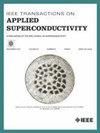Simulation Framework for Thermal Quasi-Particle Microwave Loss in Multimaterial Superconducting Quantum Circuit Elements
IF 1.8
3区 物理与天体物理
Q3 ENGINEERING, ELECTRICAL & ELECTRONIC
引用次数: 0
Abstract
Superconducting quantum circuits constitute one of the most advanced and promising platforms for building fault-tolerant quantum computers. However, the associated relatively short coherence times remain a major challenge. Therefore quantifying the various responsible loss mechanisms is key, which can be achieved effectively by refined loss modeling. An important source of dissipation is thermal quasi-particles, for which many simulation tools exist. Here, we improve on these by integrating two of them in a self-consistent manner into an automated workflow for a circuit composed of two materials. Namely, the workflow consists of a numerical simulation of the Mattis–Bardeen surface impedance and electromagnetic finite-element simulation using多材料超导量子电路元件中热准粒子微波损耗的模拟框架
超导量子电路是构建容错量子计算机的最先进和最有前途的平台之一。然而,相关的相对较短的相干时间仍然是一个主要挑战。因此,量化各种责任损失机制是关键,通过精细化损失建模可以有效地实现这一目标。热准粒子是耗散的一个重要来源,目前已有许多模拟工具。在这里,我们通过将其中两个以自一致的方式集成到由两种材料组成的电路的自动化工作流程中来改进这些。即,工作流程包括Mattis-Bardeen表面阻抗的数值模拟和使用Ansys HFSS进行电磁有限元模拟,以预测正常状态下材料性能的温度相关准颗粒损失。作为测试,我们用它模拟了钽组成的超导谐振器的质量因子随温度的变化。钽谐振器通常被发现在明显低于直流输运测量中观察到的体临界温度(4.4 K)所期望的温度(小于1 K)下由准粒子损失主导。一个可能的原因是具有低临界温度的缺陷相,可能与钽相有关。通过将与温度相关的损耗数据拟合到工作流结果中,我们估计了缺陷阶段的浓度。这是将材料设计和微波损耗联系起来的重要一步。
本文章由计算机程序翻译,如有差异,请以英文原文为准。
求助全文
约1分钟内获得全文
求助全文
来源期刊

IEEE Transactions on Applied Superconductivity
工程技术-工程:电子与电气
CiteScore
3.50
自引率
33.30%
发文量
650
审稿时长
2.3 months
期刊介绍:
IEEE Transactions on Applied Superconductivity (TAS) contains articles on the applications of superconductivity and other relevant technology. Electronic applications include analog and digital circuits employing thin films and active devices such as Josephson junctions. Large scale applications include magnets for power applications such as motors and generators, for magnetic resonance, for accelerators, and cable applications such as power transmission.
 求助内容:
求助内容: 应助结果提醒方式:
应助结果提醒方式:


